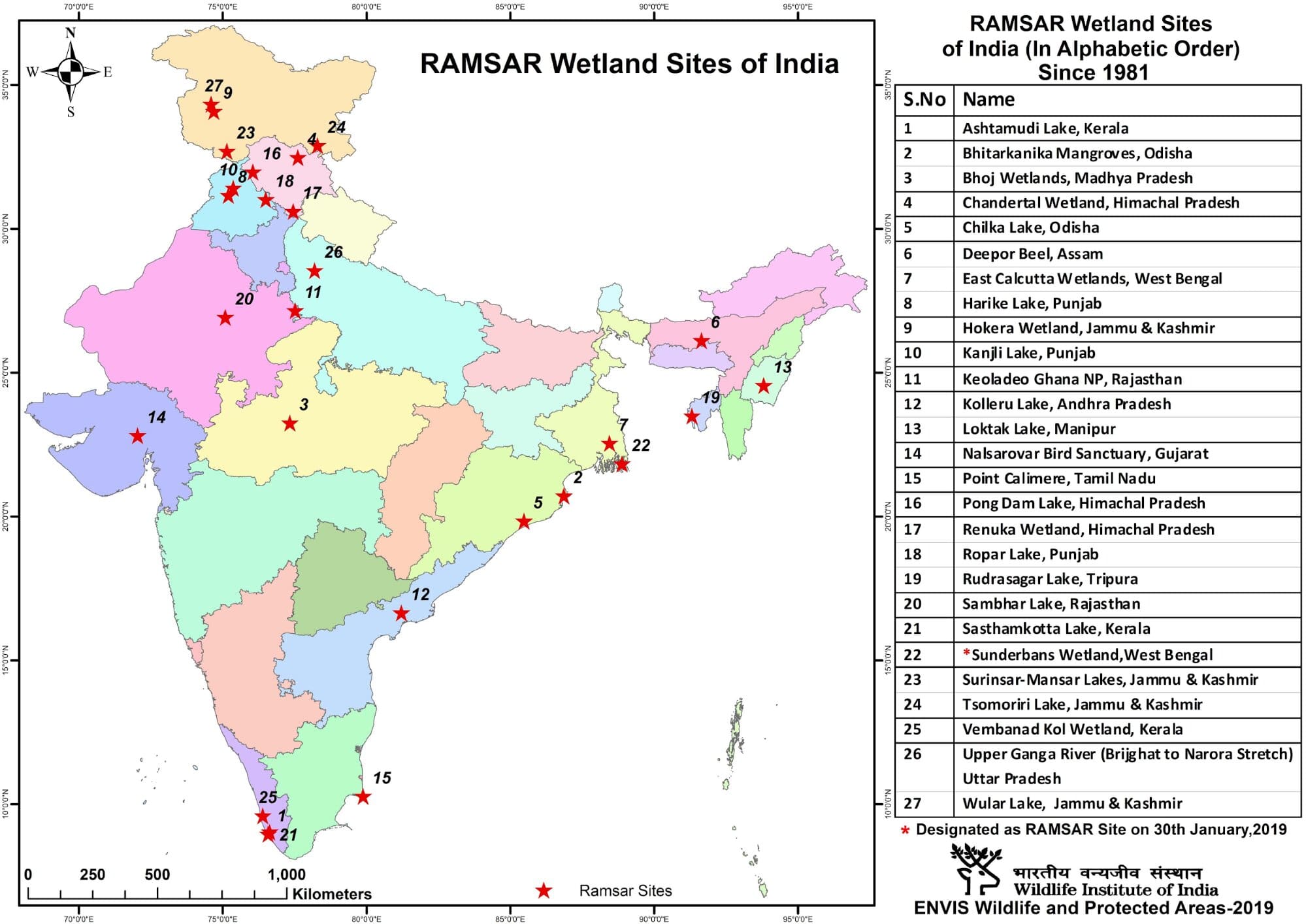World Wetlands Day | 04 Feb 2019
- Recently World Wetlands Day was celebrated with a theme - 'Wetlands and climate change'.
- World Wetlands Day is celebrated every year on 2nd February. This day marks the date of the adoption of the Convention on Wetlands on 2 February 1971, in the Iranian city of Ramsar.
Wetlands
- Wetlands are ecosystems saturated with water, either seasonally or permanently. They include mangroves, marshes, rivers, lakes, deltas, floodplains and flooded forests, rice-fields, and even coral reefs.
- Wetlands are vital for human survival as they are among the world’s most productive environments; cradles of biological diversity that provide water and productivity upon which countless species of plants and animals depend for survival.
Why are wetlands important?
- Wetlands are the vital link between land and water.
- Wetlands are a critical part of our natural environment. They mitigate floods, protect coastlines and build community resilience to disasters, reduce the impacts of floods, absorb pollutants and improve water quality.
- Wetlands are critical to human and planet life. More than one billion people depend on them for a living and 40% of the world’s species live and breed in wetlands.
- They are a vital source for food, raw materials, genetic resources for medicines, and hydropower.
- They play an important role in transport, tourism and the cultural and spiritual well-being of people.
- They provide habitat for animals and plants and many contain a wide diversity of life, supporting plants and animals that are found nowhere else.
- Many wetlands are areas of natural beauty and many are important to Aboriginal people.
- Wetlands also provide important benefits for industry. For example, they form nurseries for fish and other freshwater and marine life and are critical to commercial and recreational fishing industries.
Threats to Wetlands
- Agriculture and Development: Wetlands are often underappreciated because they are viewed as being more valuable for their water and undeveloped land than the ecosystem services they provide.
- They are often drained to make room for agriculture or human settlements and any wetlands nearby left untouched may lose their own water to this development.
- Pollution: Wetlands act as natural water filters. However, they can only clean up the fertilizers and pesticides from agricultural runoff but not mercury from industrial sources and other types of pollution.
- There is growing concern about the effect of industrial pollution on drinking water supplies and the biological diversity of wetlands.
- Climate Change : Climate change brings a variety of alterations to patterns of water and climate.
- In some places, rising sea levels are swamping shallow wetlands and drowning some species of mangrove trees. In others, droughts are destroying estuaries, floodplains and marshes.
- According to Global Wetland Outlook, released by the Ramsar Convention on Wetlands, approximately 35 percent of the world’s wetlands were lost between 1970-2015 with annual rates of loss accelerating from 2000, according to the first-ever Global Wetland Outlook.
- In some places the pace of wetlands destruction occurs at incredible speeds. For example, In the Philippines, 80% of coastal wetlands have been degraded, drained or destroyed in the last 30 years.
‘Wise Use’ of Wetlands
- According to Ramsar Convention on Wetlands, ‘Wise use’ of wetlands is the maintenance of their ecological character, achieved through the implementation of ecosystem approaches, within the spirit of sustainable development. ‘Wise Use’ guidelines encourage Contracting Parties to:
- adopt national wetland policies with legislations and institutional arrangements to deal with wetland;
- develop programmes of wetland inventory, monitoring, research, training, education and public awareness; and
- take actions involving the development of integrated management plans covering every aspect of the wetlands and their relationships with their catchments.
Ramsar Convention
- The Convention on Wetlands, called the Ramsar Convention, is the intergovernmental treaty that provides the framework for the conservation and wise use of wetlands and their resources.
- The Convention was adopted in the Iranian city of Ramsar in 1971 and came into force in 1975. Since then, almost 90% of UN member states, from all the world’s geographic regions, have acceded to become “Contracting Parties”.
- India has 26 Ramsar Sites which are the Wetlands of International importance.
Montreux Record
- Montreux Record under the Ramsar Convention is a register of wetland sites on the List of Wetlands of International Importance where changes in ecological character have occurred, are occurring, or are likely to occur as a result of technological developments, pollution or other human interference.
- It is maintained as part of the Ramsar List.
- Currently, two wetlands of India are in Montreux record : Keoladeo National Park (Rajasthan) and Loktak Lake (Manipur).
Note: Chilka lake (Odisha) was placed in the record but was later removed from it.

